This lakeside town on the foothills of Mount Fuji in Japan is a slice of heaven on earth
It was the cusp of autumn in a gentle side of Japan.
The afternoon sun cast its ochre glow upon Lake Kawaguchiko and everything in sight as Mount Fuji stood majestically over it. The cool breeze ruffled the golden leaves of the trees around us, gently nudging them to fall softly to the ground. To our right, a little girl’s laughter cut through the stillness, while on the promenade before us, dog-walkers let their furry wards check each other out. We took the moment in while slowly sipping our midday coffee, allowing it to coax us into quiet contemplation, grateful for the blessing of a perfect day.
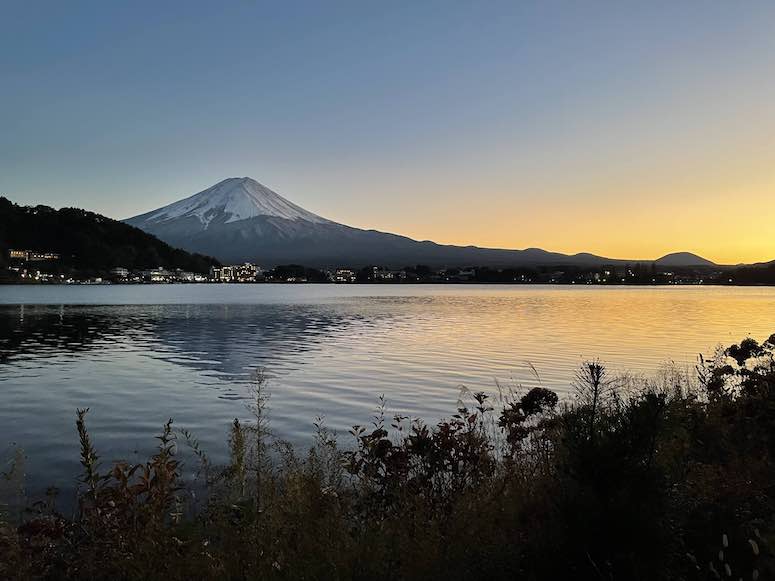
It was a scene straight out of a movie or a pleasant dream. It was surreal, yet it was real. And this was in a slice of heaven on earth, in a small resort town called Fujikawaguchiko in Japan, remarkably just a 90-minute bus ride from Tokyo’s JR Kyushu station.
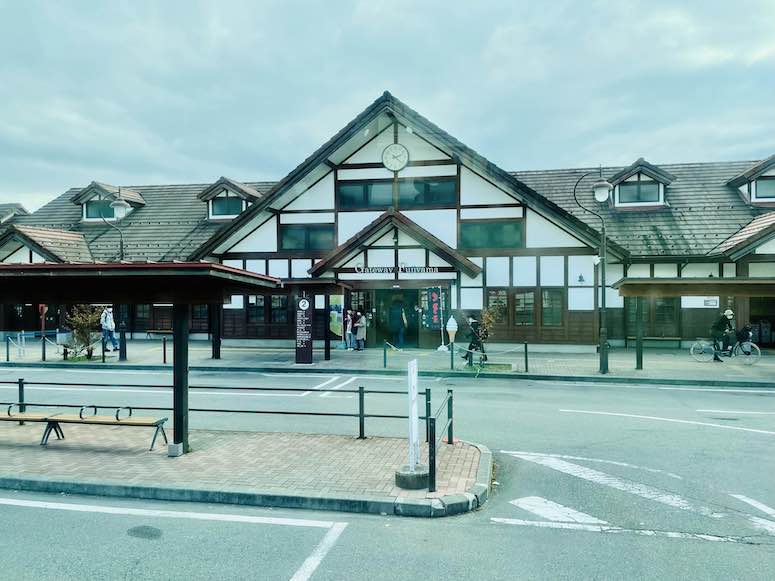
It was our second time here last October just when Japan reopened its doors to tourists this pandemic. The first time was at the tail-end of spring in 2018 when we stayed at a ryokan or a traditional Japanese room at a no-frills onsen hotel that offered a jaw-dropping front-row seat to both Mount Fuji and the lake. We were spellbound. The view of the mountain and the lake kept changing as the day went by.

Early in the morning, a lakeside stroll gifted us with a portrait of Mount Fuji and its mirror reflection on the lake, a sight one must catch as it is fleeting, and only seen on a clear day and at a specific time. Then almost too quickly, the sun sets to make way to an indigo sky changing the mood to that of a brooding Mount Fuji before it is engulfed in total darkness. But if one wakes up just before the break of dawn, the sky turns a Van Gogh-purplish hue and that same spectacle of the quiet mountain and its loyal companion of a lake take on the dramatic air of a divine work of art.

The same view shifts with the changing of the seasons. We were told that on the last week of April, the town is framed with the spectacle of cherry blossoms by the lake. When we caught it at the start of the annual Shibazakura Festival in May 2018, a huge bed of pink moss served as the mountain’s foreground.
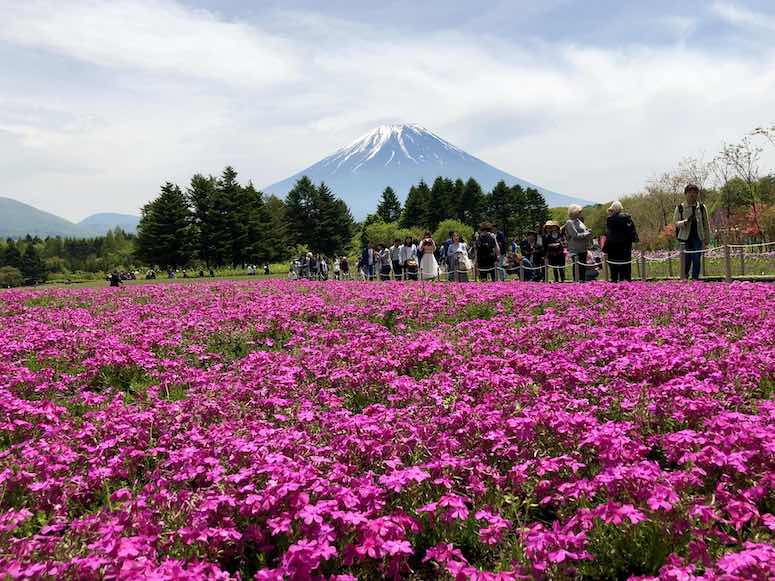
This time as autumn unfolded, at Oishi Park, the ragweeds (plants best likened to the heads of Trolls from the animated movie) have turned a bright red color and we were treated to yet another vision too beautiful for words.
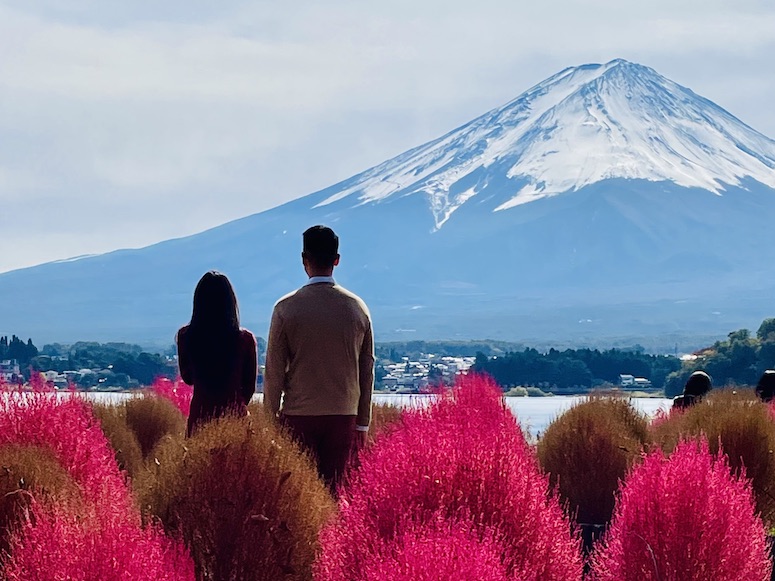
And as I write this, Fujikawaguchiko is holding a month-long autumn festival when the entire area is expected to be blanketed in foliage in shades of red, orange, and gold. And what an enchanting view it must be now at Momiji Tunnel, a walkway lined with crimson maple trees on each side, especially when illuminated at night.
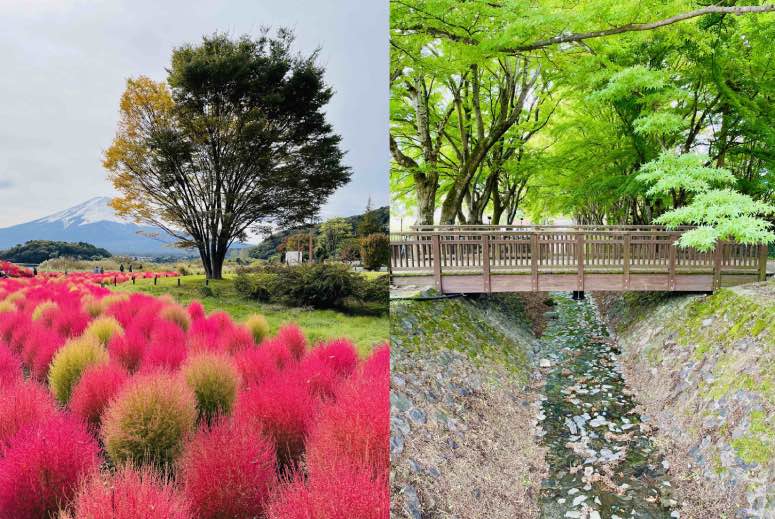
Yet there is more to Fujikawaguchiko than breathtaking views of the mountain and the lake. There are parks lush with beautiful greenery where one can let the day pass, away from the madding crowd. Best of all, some require no entrance fees. Just show up with a blanket and some food or a bottle of wine and treat yourself to a stress-free day. The promenades by the lake are nearly empty and one can walk idly by or from there, hop on a boat to explore the neighboring areas around the lake.
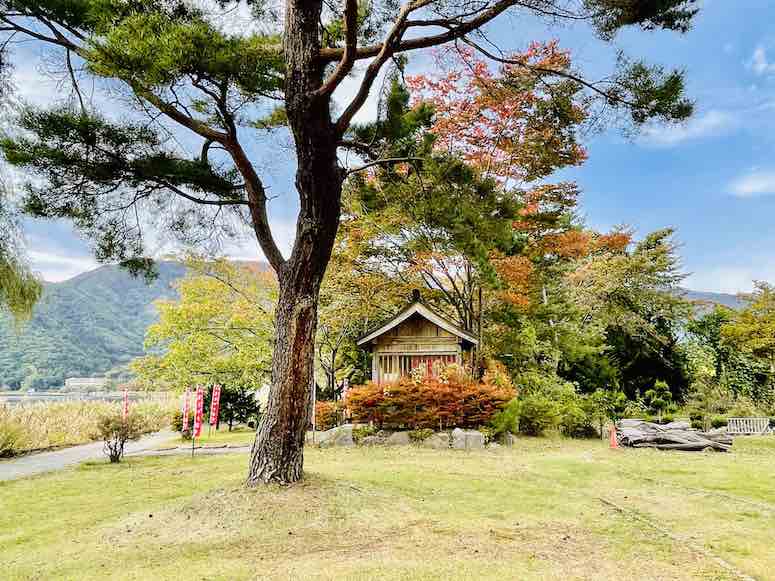
Museums abound where modern and traditional Japanese art are on display and one, the Ichiko Kubota Art Museum which showcases silk kimonos, has an age-old Japanese garden to inspire musings and spark creativity. For the young, Fujikawaguchiko is also well-known for its huge amusement park, the Fuji-Q Highland where kids of all ages can enjoy rollercoaster rides and a theme park vibe. Families with little kids can visit Fujikawaguchiko Music Forest Museum for a music-filled day amid a European setting. Or take them to the Kachi Kachi Ropeway to ride the cable car for a panoramic view of the entire town.

Meanwhile, those who have not tried to go to an onsen or a Japanese public bath can shed their inhibitions here along with the cares of the day as we did. The area is popular for hot springs. For those who can afford it, one can check into a hotel with an in-room onsen and bathe privately while gazing upon the mountain.
If one is to spend more than a day here, navigating around the area is easy by bus or taxi. We availed of the two-day bus pass where one can hop on or off at any stop on the red, blue or green lines as many times as you can. A change to the railway can get you to see the other lakes, Lake Saiko or Shojiko. Around Lake Saiko, one can go back in time at a centuries-old traditional Japanese village at Saiko Iyashi-no-Sato Tenba, or go nature-tripping at the bat cave or wind cave.
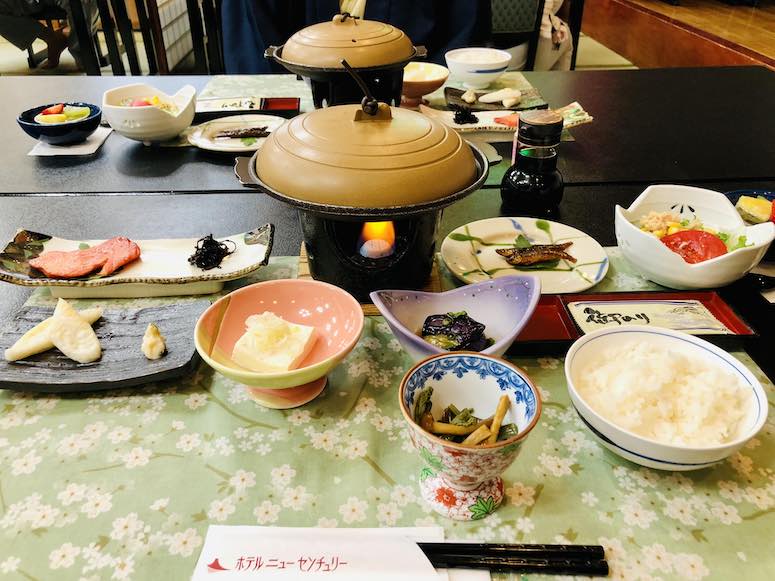
As for food, one shouldn’t leave without a good helping of hoto noodles, the town’s specialty, flat udon noodles served in a heart-warming miso broth. We also tried the hoto noodles in a sukiyaki broth at Houto Labo and it was rich and comforting. For breakfast, most hotels offer a traditional Japanese meal with enough food to set you up for the rest of the day. Make sure to eat dinner early, though, as the sun sets early and only a few restaurants stay open till late.
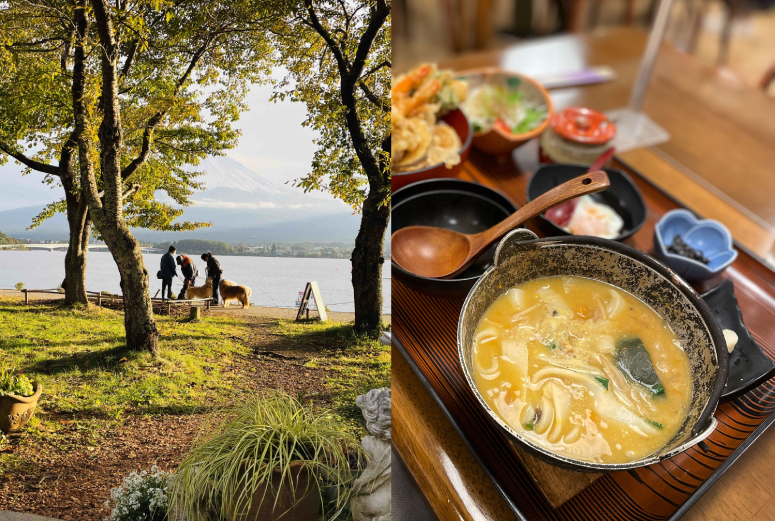
Lastly, those staying here but wish to spend not just time but money can take a 30-minute bus ride to Gotemba, for the premium outlet that features top brands and designers. (For this reason, I have baptized the place, “Kawa-GUCCI-ko.”)
Indeed, if one plans a perfectly-timed visit to Fujikawaguchiko, you will not run out of things to do or see. We have yet to see it in summer or winter when in Feburary, fireworks are set off over the lake in the evenings. Months to avoid are from June to September when the rains can dampen the mood. Of course, there are days when Mount Fuji hides behind the clouds, or when fog sets in and the lake looks like the set of “Phantom of the Opera,” as we saw before we bid this place goodbye.
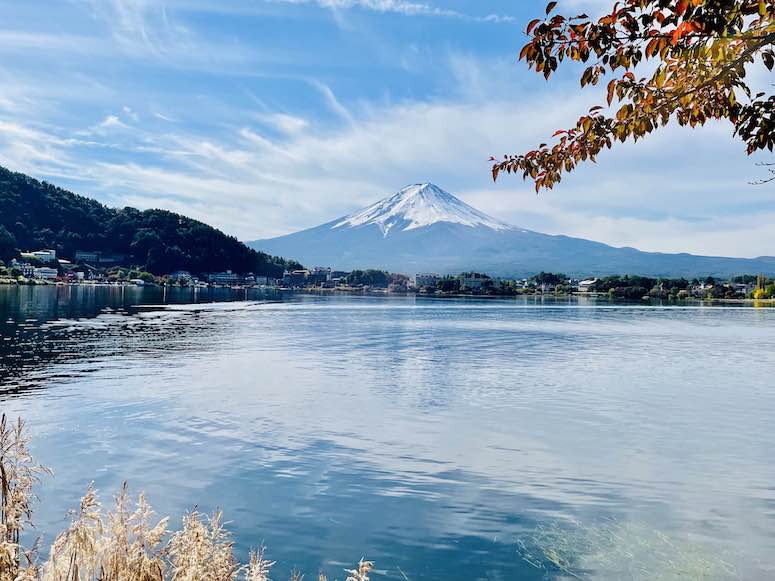
It is easy to fall in love with Fujikawaguchiko. Its many charms are not lost on romantic souls. But all this reminiscing means one thing. That a return to this place, where for a brief moment it felt like all is right in the world, is in order. If there is again a next time, we must stay longer.


